The WELS fertility implosion
The Wisconsin Evangelical Lutheran Synod suffered an inexplicable collapse in its birth rate in 2020, starting with a "signal" in 2019.
Listen to this article:
Like the Lutheran Church — Missouri Synod (LCMS), the Wisconsin Evangelical Lutheran Synod (WELS) faces a demographic crisis that threatens its long-term survival. We will cover the bigger picture in a future article (WELS produces and publishes truly excellent annual statistical summaries that are mainly self-explanatory); however, a reader brought to our attention an inexplicable collapse in the Synod’s birth rate starting in 2019 and peaking in 2020, with only a slight recovery since.
WELS annual births have dropped sharply, from 8,968 in 1980, to 7,023 in 2004, to 2,985 in 2024—a 67% (3x) decline over ~40 years. Even though births per marriage (a crude but critical indicator of family formation) have been slowly but steadily increasing for decades (a material portion of which could be due to improvements in natal care, especially for premature births, as well as advancements in fertility treatments), those gains have been insufficient to offset “backdoor losses” (~60%+ of WELS-born youth eventually quit the Synod), which have been compounded by deaths starting to outpace births. Youth attrition has been remarkable, with a 31.7% drop in the 18-34 cohort (peak fertility) since 2000.
It is noteworthy that WELS has experienced four years of rising attendance and record adult confirmations (4,100 in 2024), so it’s not all doom and gloom. Nevertheless, overall, family formation in the WELS is in dire condition, with marriages falling below 1,000 in 2024 for the first time, as the Synod’s youngsters move toward extinction and mildly delay marriage.
The Signal
From 2018 to 2019, there was a statistically anomalous change in the WELS birth rates that warrants further investigation because it could be a precursor “signal” to the unprecedented collapse in 2020 that still largely persists.
In 2019, the ratio of a single birth for every WELS woman aged 18-341 increased from ~5.7 to ~6.1. This was ~+2.53 standard deviations above the historical mean—not extreme, but definitely unusual. In 2020, the ratio increased from ~6.1 to ~9.5, or ~+23.5 standard deviations above the historical mean. This is an absurd outlier that can only be described as a catastrophic break.
To underscore how absurd the 2020 change was, the probability of it happening was 0.000000000000000000000000000000000000000000000000000000000001, or ~10^{-60}. Not impossible, but as close to impossible as impossible can be. The change cannot be ascribed to random variation.
The WELS author does not mention the 2019 signal and only addresses 2020, noting that it cannot be blamed on COVID-19 (or the vaccines, which only achieved mass distribution in 2021). You might argue that the 2019 signal is immaterial and was exaggerated by the 2018 pause in a long negative trend. Still, it is undoubtedly worth looking into if more fine-grained data is available.
People have asked if COVID could be responsible for the 2020 sharp drop in births. No. Most infants born in 2020 would have been conceived before anyone knew what COVID even was. If COVID was a factor on WELS gross total birthrate, if anything, one might suspect there might be an uptick in births in 2021 and 2022, as husbands and wives had more “together time” during the lockdowns. Instead, that 2020 drop seems to be due to three intersecting factors. (A) 2020 is the year 100% of GenXers were now 40+. WELS has substantially more GenXers than Millennials, and GenXers have more children. (B) Back-door losses of young adults from 2012 to 2019 were especially high. Considering the ages of those who left, 2020 to 2027 is when this would really show up in the birthrate. (C) Births prior to 2020 are likely overreported slightly, lumping in some baptisms of non-member children. Ultimately, the rationale for what happened in 2020 is not as important as the reality that it was not an anomaly. Since 2020, nothing has changed. In 2021, WELS births dropped below 3000 for the first time since we’ve tracked such things; and it hasn’t bounced back. However, the decline in annual births seems to have slowed. (Rev. Jonathan Hein, WELS Statistical Summary & Analysis Summary 2024, footnote 6, page 25).
The COVID-19 analysis is correct since the earliest confirmed (or, at least, reported) traces of the virus only showed up in late 2019 in some parts of the US2 and were not widespread enough where WELS congregations are concentrated to have caused the precipitous decline in births per family. That said, it is odd for WELS to say 2020 was “not an anomaly” just because the change held and became a “new normal” post-GenX artefact. It’s not necessarily a dismissal, but it comes across that way.
If the cause were simply demographic in terms of GenXers aging out of peak fertility, you would expect to see a corresponding dramatic increase in GenX births or conversions from 1965 to 1980. However, the stats (see Chart C below) only show a steady but unremarkable expansion for that cohort. There is nothing you can point to that would predict the abrupt reversal in 2020.3
The WELS GenX cohort is definitely larger than the millennials. However, it does not appear to be more fertile, with early cohort millennials (with a possible assist from late-cohort GenX, since Christians continue having children later than their secular counterparts) having a markedly sustained high birth ratio. However, the GenX scale is insufficient to trigger the extreme deviations upon aging out. The data predicts a smooth taper, not a cliff.
In Chart J below, there is a steady decline in women 18-34 (~1,000-2,000/year drop), with a very modest 2020 inflection, and almost nothing for 2019. It should be noted that there was a quite pronounced negative change that started in 2012, and accelerated slowly before it paused briefly in 2018. That is plausibly explained as the expected sunsetting of GenX fertility along a normal distribution curve.
It is also worth pointing out that Wisconsin had an estimated 1 birth for every 11 18-34 year old women in 2020, so WELS went from almost double that fertility to nearly matching the state average. Wisconsin's 2020 fertility decline was 3.8% (TFR from 1.73 to 1.665), far milder than WELS' ~37% birth drop. Similarly, WELS did not mirror national trends, which produced the “2021 Baby Bump” - the first reversal in declining fertility rates since the Great Recession (2008-2011) - when increases in first births and births to college-educated mothers were especially large in 2021.
The change in WELS births per marriage is only slightly less extreme than the births per fertile woman. Births per marriage changed by about -12 standard deviations below the historical mean, which is an extreme outlier. It’s an anomaly that defies obvious explanations. It might be expected if there were war or famine, but there was not.
Since it could not have been the virus itself or the vaccines, did WELS families have such a hopeless reaction to COVID-19 that by March 2020, they aggressively adopted contraceptive methods that caused the birth rate to crash? Comparative data (and new surveys) from other Lutheran church bodies are desperately needed to make a well-informed rather than a speculative conclusion. Ultimately, without some way to stem youth attrition and support family formation, WELS risks accelerating decline, despite its quite impressive evangelism efforts.
☩TW☩
I do not have access to the raw data, so I am working off reconstructions of the charts provided by WELS.
In the United States, blood samples collected between December 13, 2019, and January 17, 2020, revealed 106 individuals with SARS-CoV-2 antibodies across nine states, suggesting low-level circulation before the first official cases.
Assuming a normal distribution curve for GenX fertility (mean birth age of 27 years, standard deviation of 5 years), the cohort's collective fertility output would be expected to peak in 1999. That aligns with the midpoint of the generation (around 1972-1973), reaching prime fertility age.




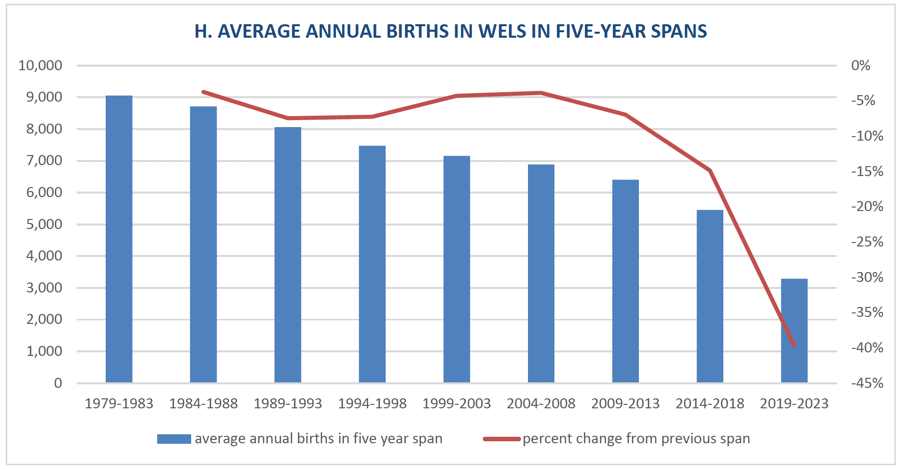
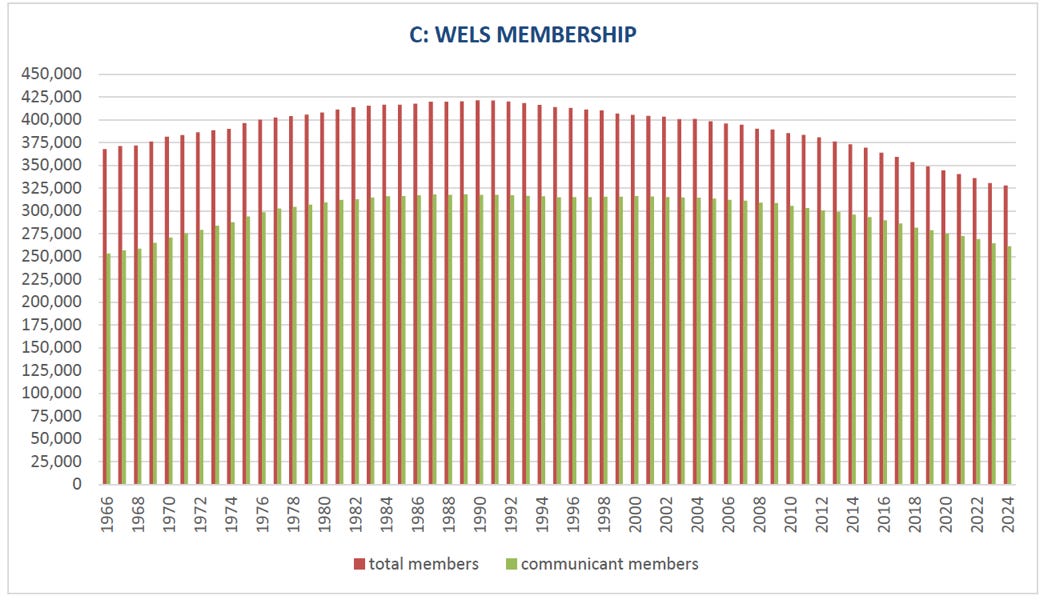
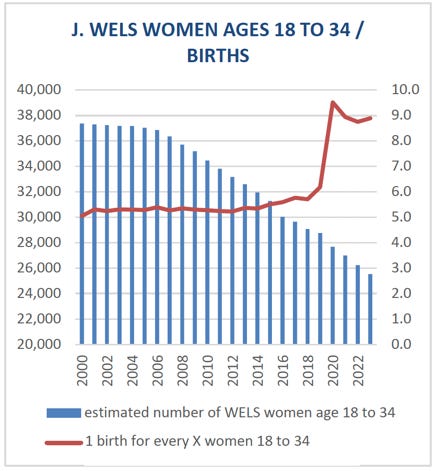
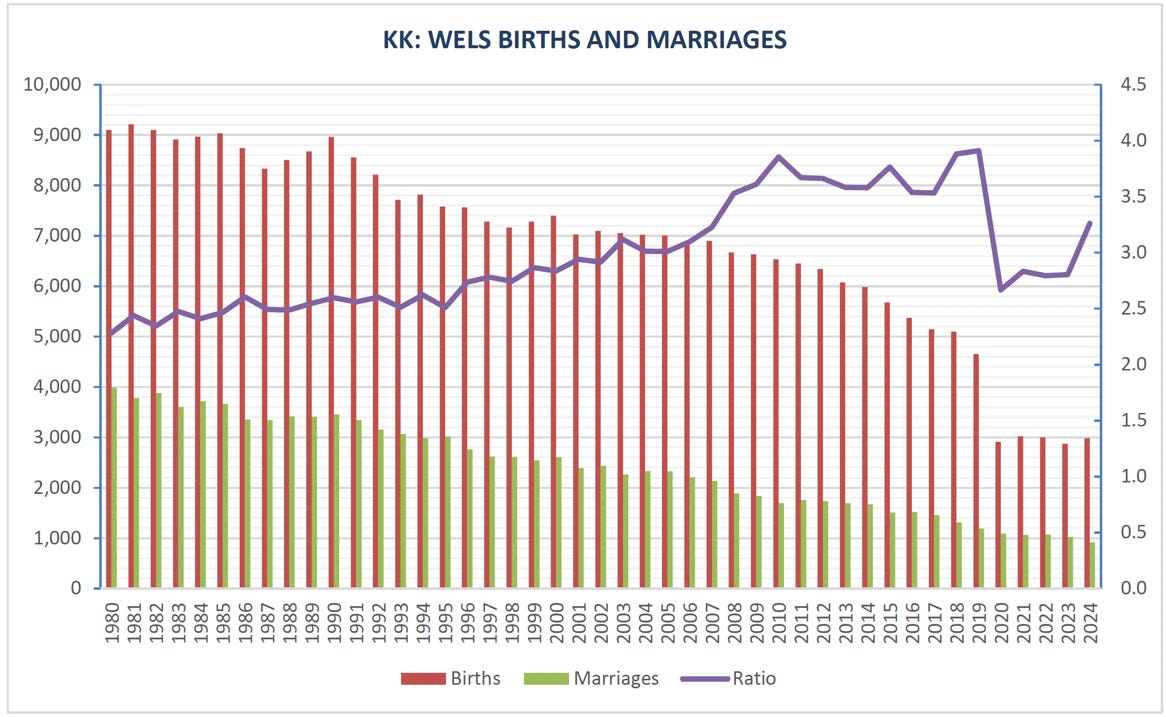
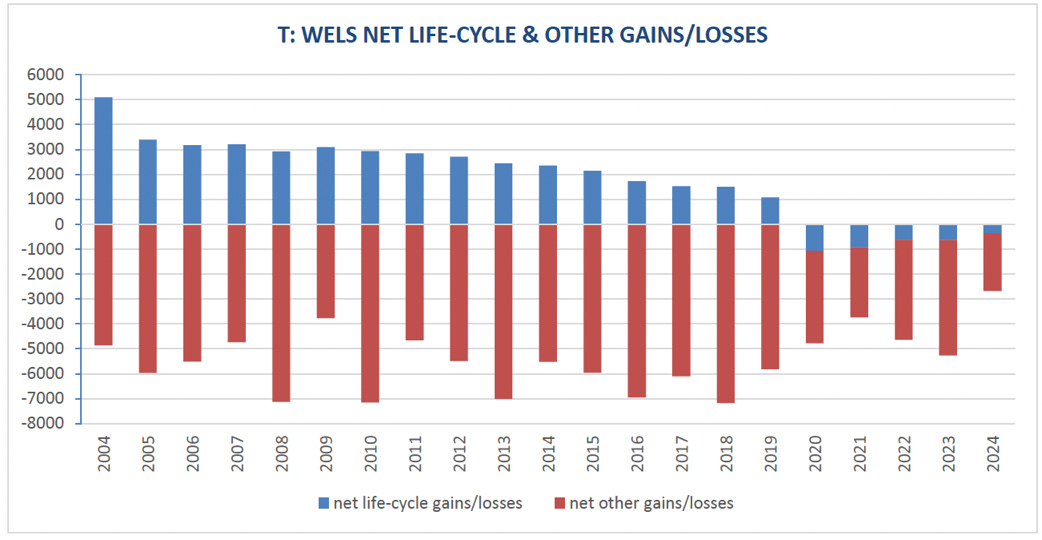
The likeliest explanation is simply a change in reporting. WELS reports before 2020 are not publicly available, and reporting format changed in 2020 and 2021. I wager if you compare congregational-level data in 2018, 2019, 2020, 2021, and 2022, you'll find some kind of major change in the implied underlying data-generating process: maybe before 2020 a bunch of churches had imputed values or were straight-lining, or maybe a bunch of congregations didn't report in 2020, or maybe the reporting forms changed, etc, etc.
A statistic within the statistics is the "four years of rising attendance and record adult confirmations" (4100). One of the thematics in the WELS/ELS/LCMS dialogs has been the statement that WELS has a greater percentage of "church growth" and contemporary music practices than ever before. I don't have their statistical annual, but I would guess that much of the attendance and adult confirmation growth comes from those congregations (large/growing). Can that be verified one way or the other? WELS isn't burdened with oppositional diatribes - missional vs. liturgical viz. - as is the LCMS. So if and as those congregations are less pressed about on all sides and allowed to do what they do, could it be that the less liturgical movement within WELS is productive to the conservative Lutheran theological cause?